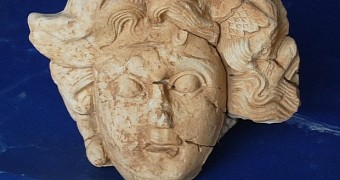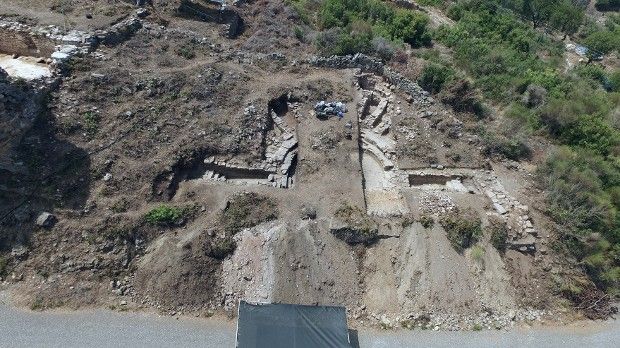Just the other day, researchers with the University of Nebraska-Lincoln announced the discovery of a millennia-old Medusa head carved in marble. The ancient sculpture was found in Turkey, at the site of what used to be a Roman city located on the country's southern coast.
Greek mythology describes the Medusa as a hideous creature with snakes growing on her head in place of hair. Then, there are also tales of how the Medusa's gaze would turn people to stone.
Sure enough, the marble carving unearthed by archaeologists at the site of the ancient Roman city of Antiochia ad Cragum in Anatolia has serpents for hair and menacing eyes wide open.
The sculpture was discovered by a group of Turkish students helping the research team with the dig, who happened to notice it and pulled it from debris near the foundation of a small building.
As fierce and scary as the Medusa is described in Greek mythology, the fact of the matter is that, in ancient times, people thought of it as a protective symbol and turned to it to ward off evil.
Thus, University of Nebraska-Lincoln researchers think that this marble Medusa head found in Turkey once adorned an altar or maybe a temple. It was not a freestanding statue, but was more likely part of the building’s pediment.
The history of the city of Antiochia ad Cragum
Archaeological evidence shows that this ancient Roman city on the southern coast of present-day Turkey was founded sometime during the 1st century AD, in the days of Emperor Nero.
Researchers exploring its remains have so far unearthed temples, altars, bathhouses, shops, mosaics and even a local council house, all of which are hallmarks of the Roman lifestyle.
As the Roman Empire reached its peak, so did the city of Antiochia ad Cragum flourish. Around the 4th century, however, the region witnessed the rise of Christianity, and soon enough, local Roman religion and culture took quite a hard hit.
“Much evidence of Roman religion and culture likely was destroyed by radical Christians as they gained prominence in the region 17 centuries ago,” said researcher Michael Hoff in an interview.
“Unfortunately, ISIS followers were not the first ones to destroy classical buildings in the name of religion. It was the Christians who performed the first destruction of buildings, back in the late Roman and Byzantine periods,” he added.
Scientists hope that, the more artifacts and buildings they unearth at the site of the city of Antiochia ad Cragum, they more they will learn about Roman life in the area millennia ago.

 14 DAY TRIAL //
14 DAY TRIAL // 

